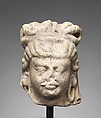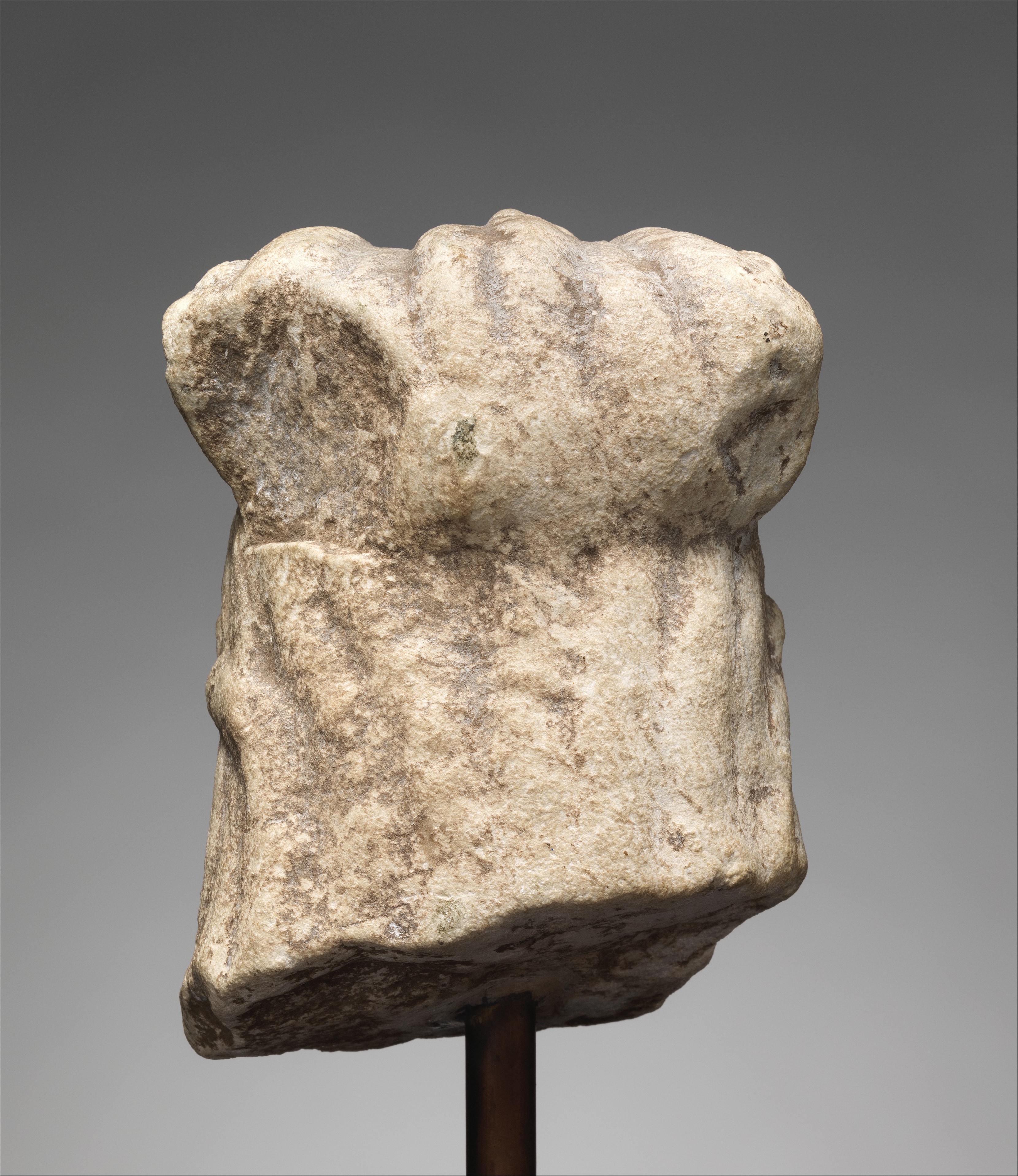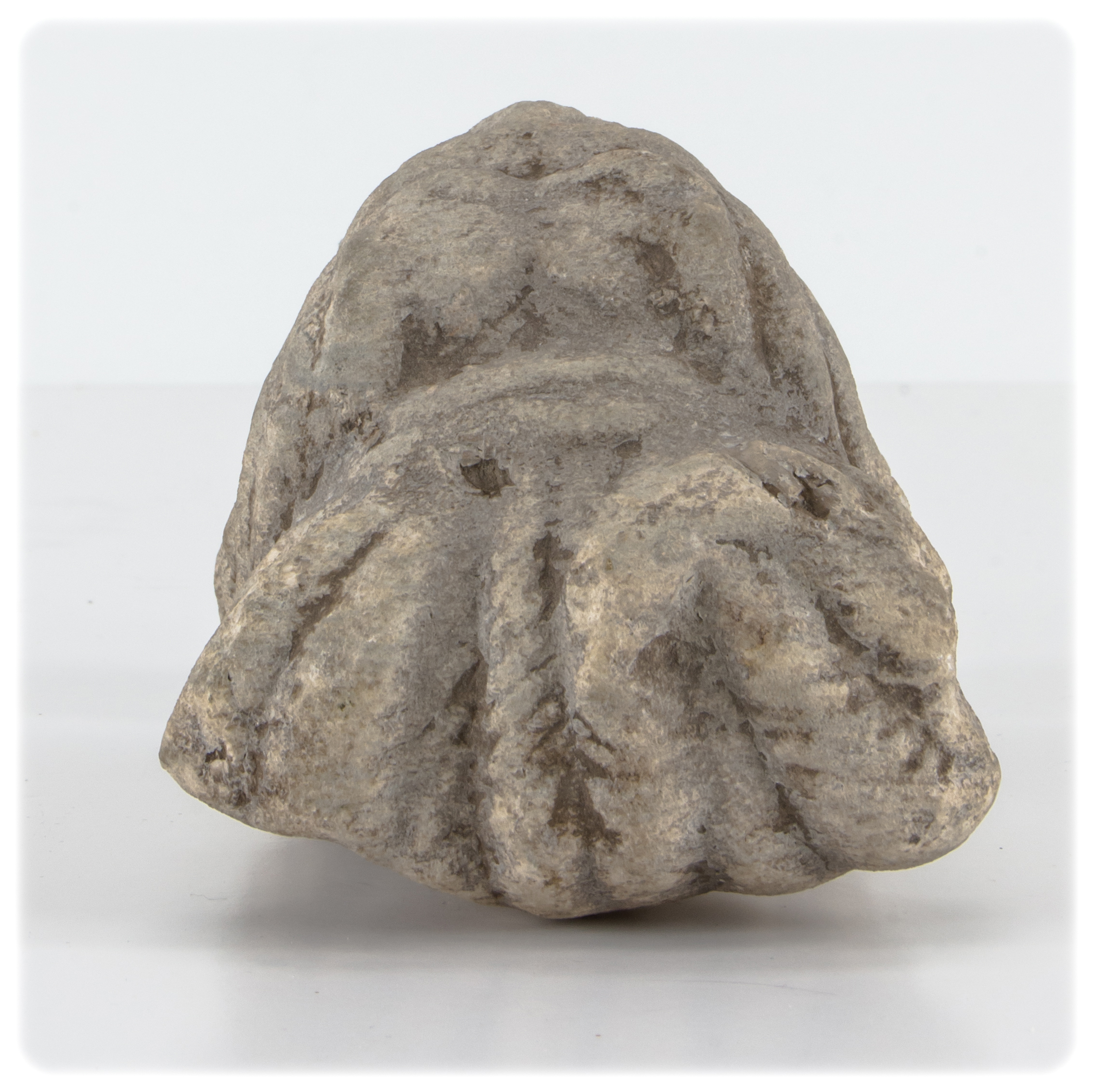Head of Shiva
Northern Pakistan (Brahmanical post-Gupta)
Not on view
The Head of Shiva is powerful testimony to the sculptural and conceptual sophistication of Brahmanical sculpture in the 6th century, at the close the Gupta period in northern India, a moment when new experimentation was underway. The stern-faced Shiva is moustached and his braids of hair are drawn up on his head, bound and allowed to fall in a double loop, a rendering directly descended from Gandharan bodhisattva imagery. This distinctive hair treatment can be traced via the northwest art of preceding centuries to Hellenistic models, as most exemplified in Apollo imagery. Already at this early date Shiva’s dreadlocks are adorned, as here on the upper right, with a crescent moon, Shiva’s lunar symbol. His other key identifier, the forehead eye, can be detected directly beneath the parting of the braids framing his forehead. The aesthetics of this Shiva head can be traced to 4th–5th century Gupta-era sandstone sculptures produced at Mathura and elsewhere in northern India.
This image cannot be enlarged, viewed at full screen, or downloaded.
This artwork is meant to be viewed from right to left. Scroll left to view more.






